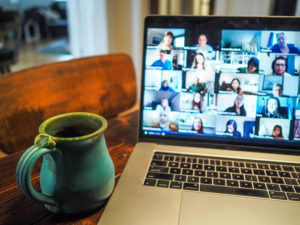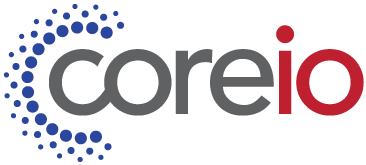The ability to securely work anywhere, any time, on any device was validated through the new reality of working in today’s COVID impacted world.
 While as CTO I would have liked to take full credit for the foresight of having a business plan supported by robust technology capabilities fine-tuned to cover all aspects of the COVID pandemic, but that was not the case. Did we have to make any large changes to weather the storm? The answer is no, but that was largely due to our team sweating the details on a few key items that all technology leaders should have in place:
While as CTO I would have liked to take full credit for the foresight of having a business plan supported by robust technology capabilities fine-tuned to cover all aspects of the COVID pandemic, but that was not the case. Did we have to make any large changes to weather the storm? The answer is no, but that was largely due to our team sweating the details on a few key items that all technology leaders should have in place:
- Robust and tested Business Continuity and Pandemic plans
- Digital Workplace processes and technologies enabling our employees to work anywhere at any time on any device
- Having empowered people in place, supported by secure and effective technologies.
When I left the office in March, I thought we would be out longer than the 14-day quarantine period, but I did not foresee that a large number of our team would be out of the office for months.
How did we fare during the first few days?
We followed our pandemic plans to ensure our staff was safe and over 75% of our workforce started working from home. While this was up from the usual 5-10% or so during ‘normal’ times, almost all employees were already used to working remotely and using and refining robust cloud-based platforms like Microsoft Teams and ServiceNow. Some of our teams that needed to be in our warehouses and provisioning centres continued to work from our locations in Richmond BC, Woodbridge ON, and Buffalo NY, with all the required safety precautions in place. Our daily Pandemic virtual meetings using Microsoft Teams ensured that as government regulations were updated, we made the appropriate changes to our operating procedures.
The most important part of our business, any business, is our client partners. They rely on us to play our part in adjusting to the initial impact of the evolving situation by providing technology solutions and supporting their employees transition to a ‘distributed workplace’ model. That meant almost overnight ramping up our services to procure, configure, distribute, and support thousands of laptops and end user technology.
Our Lifecycle Services teams, during the critical ‘Pandemic’ months (March – May), worked tirelessly as we provisioned over 34,000 end user devices and 95,000 peripherals/accessories in Canada and the US so that our clients could meet the demands of enabling their staff to work remotely. I am proud to say that our front-line staff lived up to the responsibility that came with being tagged as an ‘essential service’ during a global pandemic. It is not often that we rejoice at reduced demand, but we are actually happy that our clients are settling into a more Business-as-Usual-mode. This means they can focus on how to get the economy back on track, safely.
Across our Managed Services teams who provide both remote and local on-site support, our staff responded to our clients’ needs with speed, efficiency, and great care to be safe and follow all COVID protection guidelines. We led the set-up of new dispersed offices to help with social distancing and stood up new Help Desks to backfill the work that the diminished capability of their off-shore Help Desks could not handle.
No ask was too little or too big; our corporate values start and end with serving our clients through Trust, Experience and Unfailing Execution, and our teams lived up that.
What worked well?
- Coreio on Coreio
Our philosophy of Coreio on Coreio, in which we always use and refine our products and services internally before we bring them to market and offer them to our clients was critical to our success during these past few months. In regard to our Digital Workplace, it allowed our staff to work from home while having access to all the systems and data they required to fulfil their role safely and securely. Our focus on deploying Azure AD Multi-Factor Authentication provided a foundation in securing our workplace.
- ServiceNow
ServiceNow is the engine that runs our business and this cloud-based solution was accessible throughout the lockdown. In fact, we are using its capabilities to help deploy Employee Health Screening and Employee Readiness Surveys to ensure the health and safety of our staff that continue to work in our warehouses and distribution centers.
- Microsoft Teams
The use of Microsoft Teams allowed our staff to continue to collaborate while working from home. The features of Teams – sharing documents, whiteboarding, full integration with Office 365 and the ability to use it on various devices, was invaluable in keeping our productivity up.
- Strong Business Continuity
Having a robust and tested Business Continuity Management program including a specific Pandemic Plan allowed us to keep ahead of the situation as it unfolded. In fact, the plan predicted some of the initial ‘skepticism’ and allowed us to keep focused.
What is next?
While our Operational teams responded to the immediate challenges our clients were grappling with, our Advisory Services also provided support and guidance to our clients in helping them meet the demands of the Pandemic. In addition, we took a closer look at our client’s businesses and industries to foresee what the ‘new normal’ will look like. This meant working with our operational teams and clients, to be able to better support them in that journey. We have formulated new service offerings to help firms through their return-to-work plans. With a focus on the core fundamentals, we are sure that collectively, we will get through this and have stronger and more resilient people, processes, and technologies in place to deal with future events, whatever those will be.

Recent Comments